I’ve got a bone to pick with the internet. For years, I chased the promise of a perfect, homemade version of the iconic Chili’s Cajun Chicken Pasta. I’m sure you’ve been there, too. You follow the recipe, you do everything right, and you end up with a sad, soupy bowl of broken dreams. A watery mess that’s a pale imitation of the rich, creamy, spicy dish you were craving.
After one too many disappointing dinners, I knew I had to take matters into my own hands. I went back to my culinary roots, tossed out the flawed methods I kept seeing online, and re-engineered the sauce from the ground up to be absolutely, positively foolproof.
This is it. This is the copycat recipe that actually works, delivering that perfect, cling-to-the-pasta, creamy restaurant sauce every single time. No more watery sauce. Ever. This is the real deal.
Why This Recipe Is the Only One You’ll Ever Need:
- The Unbeatable No-Fail Sauce: This sauce is specifically designed to be silky, rich, and stable. It will never break or turn watery. That’s a promise.
- Authentic Chili’s Flavor: We don’t just add a sprinkle of spice; we build layers of flavor to perfectly capture that spicy, savory kick you love from the restaurant.
- Brilliantly Simple Steps: Forget confusing instructions. This is a clear, streamlined path to getting this restaurant classic on your table fast.
- Complete Guidance: From how to get a perfect sear on your chicken to the absolute best way to reheat leftovers so they taste brand new, this guide has you covered.
Key Ingredients & Smart Swaps
Here’s exactly what you’ll need:
Cajun Chicken:
- Boneless, Skinless Chicken Breasts: These are our canvas. They cook up quickly and stay wonderfully tender, making them the perfect vehicle for our bold spice blend.
- Cajun Seasoning: The soul of the dish! Use your favorite store-bought brand, or make your own blend to control the heat.
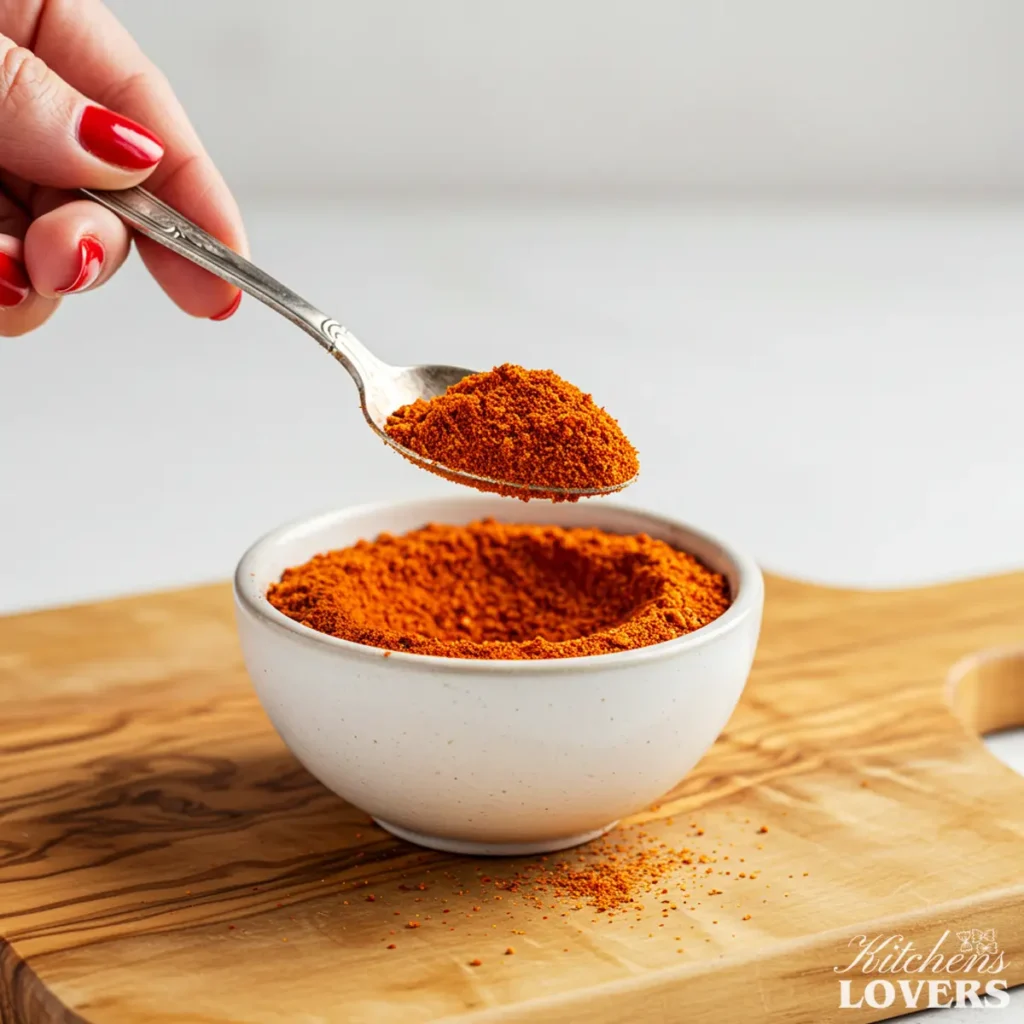
- Butter & Olive Oil: We’ll use a combination for cooking the chicken. The butter provides flavor and a rich brown crust, while the olive oil prevents the butter from burning.
Creamy Sauce & Pasta:
- Penne Pasta: The ridges and tubes of penne are practically engineered to grab onto this creamy sauce, ensuring you get a perfect bite every time.
- Butter: This forms the rich base of our sauce.
- All-Purpose Flour: Here it is. The first part of our sauce insurance policy.
- Garlic: Freshly minced is best for that amazing, aromatic flavor foundation.
- Chicken Broth: Adds a savory depth of flavor that cream alone can’t achieve.
- Heavy Cream: This brings the luxurious, creamy texture. Don’t skimp here!
- Parmesan Cheese: Freshly grated is a non-negotiable! It melts beautifully and adds a nutty, salty bite. Avoid the pre-shredded kind, which contains anti-caking agents that can make your sauce gritty.
- Seasonings: A simple mix of salt, black pepper, and just a pinch of paprika.
Garnish:
- Diced Roma Tomatoes: For a fresh, bright pop of color and acidity.
- Fresh Parsley: A little green to liven things up.
The Secret to a Creamy, Not Watery, Sauce
This is where so many other online recipes fail, and where we are going to succeed. The problem with simply heating cream and cheese is that it’s prone to separating or being thin. We are building a better sauce from the start. Our star “ingredient” is actually a technique: creating a simple roux.
By whisking a little all-purpose flour into our melted butter at the start, we’re creating a stable base. This simple paste is a classic thickening agent that acts like a promise to your sauce—a guarantee that it will be velvety, stable, and will cling perfectly to your pasta. It is the absolute, non-negotiable key to a foolproof cream sauce. It takes an extra 60 seconds, and it makes all the difference. No soupy pasta, ever again.
Smart Swaps & Substitutions
| Ingredient | Substitution | Notes |
| Chicken Breasts | Chicken Thighs | Boneless, skinless thighs work great and are very forgiving. Cook time may be slightly longer. |
| Penne Pasta | Fettuccine, Rigatoni, or Bowties | Any sturdy pasta that can hold up to a thick sauce will work beautifully. |
| Heavy Cream | Half-and-Half | You can use half-and-half, but the final sauce will be a little less rich and thick. |
| All-Purpose Flour | Cornstarch Slurry | If you’re gluten-free, you can skip the roux and thicken the sauce at the end by whisking in 1 tbsp cornstarch mixed with 2 tbsp cold water. |
Essential Equipment
You don’t need a professional kitchen to make this dish, but using the right tools for the job makes the entire process smoother and guarantees a better result. Think of these as your partners in creating the perfect copycat Cajun chicken pasta. They aren’t just objects; they’re a key part of the “no-fail” system we’re building.
Here’s the simple equipment I rely on:
A Large, Heavy-Bottomed Skillet (12-inch):
This is the most important tool in your arsenal for this recipe. Why this skillet? A large surface area is crucial. It gives the chicken plenty of room to sear properly instead of steaming, which builds incredible flavor. More importantly, it allows the cream sauce to heat gently and evenly without scorching. If you try to cram the sauce into a small pot, the liquid can evaporate too quickly, making the sauce gummy and too thick. A 12-inch cast-iron or heavy stainless-steel skillet is perfect.
A Sturdy Whisk:
When we build our foolproof cream sauce, you need a whisk to smoothly incorporate the flour into the butter for our roux and then to seamlessly melt in the Parmesan cheese. This isn’t the place for a fork! A good whisk is your secret weapon against lumps, ensuring that silky-smooth texture we’re after.
Tongs:
Essential for flipping the chicken breasts without piercing them. Piercing the chicken with a fork lets all those delicious juices escape, leading to dry results. Tongs let you handle the chicken gently, preserving its tenderness.
A Large Pot for Boiling Pasta:
This might seem obvious, but using a pot that’s too small is a cardinal sin of pasta-making! The pasta needs lots of room to move around in the boiling water to cook evenly and prevent it from clumping together into a sticky mess.
That’s really it. No fancy gadgets, just a few key pieces of equipment that empower you to get that perfect, restaurant-quality result right in your own kitchen.
Expert Tips for Flawless Results
This is where we separate a decent home-cooked meal from an unforgettable, restaurant-quality experience. These aren’t just suggestions; they’re the hard-won lessons from my kitchen that will make your copycat Chili’s Cajun chicken pasta absolutely foolproof. Think of this as your insider’s guide to getting it right on the very first try.
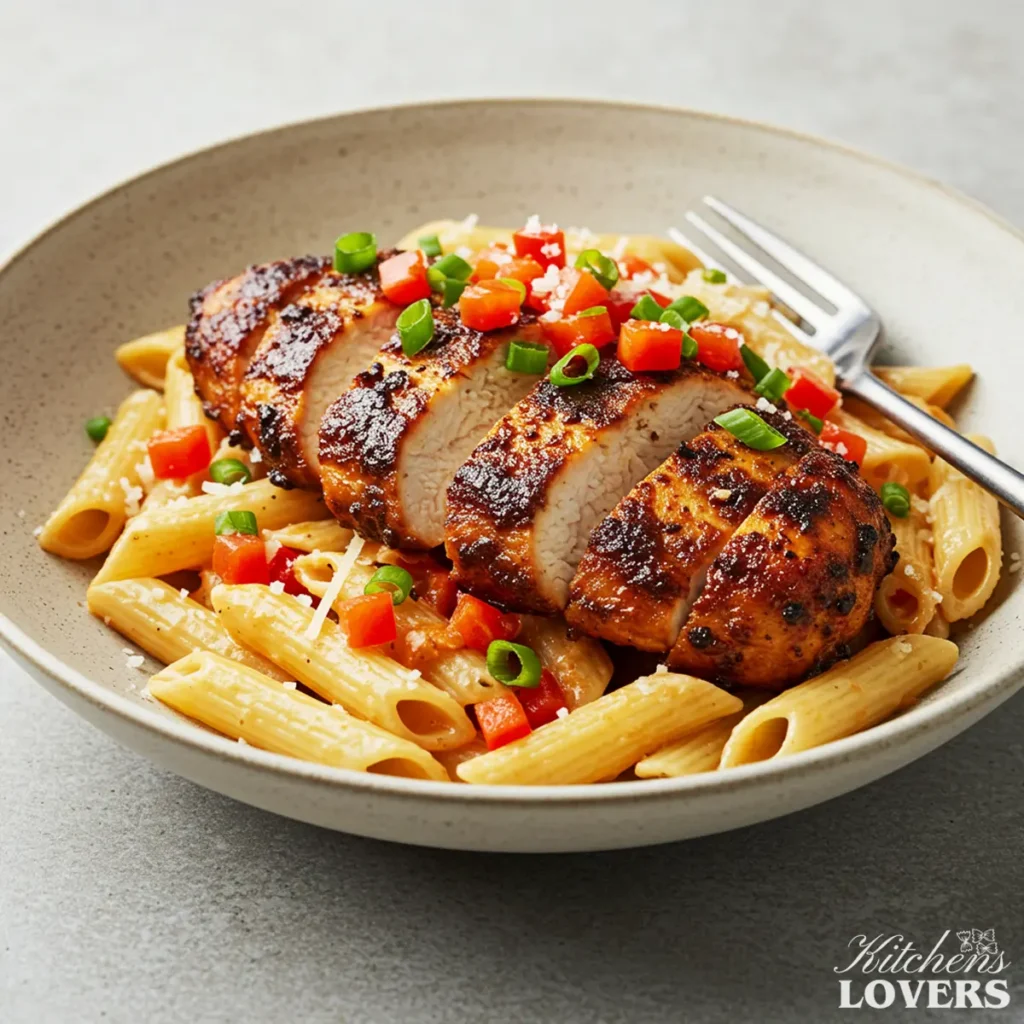
How to Guarantee Your Sauce is Never Watery
This is the big one. That sinking feeling when you see a beautiful sauce turn into a thin, soupy mess? We’re putting an end to that right now. The secret is all about controlling your ingredients and your heat.
First, embrace the roux. As we covered in the ingredients section, whisking flour into your melted butter for just a minute is the single most important step you can take. It builds a stable foundation that dairy alone just can’t create. Second, and this is crucial, don’t add cold cream directly to a screaming-hot pan. This temperature shock can cause the cream to “break” or separate. I like to let my heavy cream sit on the counter for 15-20 minutes to take the chill off before I slowly pour it into the skillet. A little patience here pays off with a flawlessly silky texture.
The Best Way to Cook Your Chicken So It Stays Tender
The biggest crime against a good pasta dish is dry, tough chicken. We’re not going to let that happen. The first key is a hot pan and no crowding. Give each chicken breast plenty of personal space in the skillet. If you cram them in, they will steam instead of sear, and you’ll miss out on that gorgeous, deep-brown crust where all the best flavor lives. Cook in batches if you have to! The second secret? Let it rest. After the chicken is cooked, transfer it to a cutting board and let it rest for 5-10 minutes before slicing. This allows all the juices to redistribute throughout the meat, guaranteeing every single bite is tender and delicious.
Don’t Add the Pasta to the Sauce (Yet!)
Here’s a little pro tip that makes a huge difference in the final dish. Instead of dumping the cooked pasta directly into your big pan of sauce, do the reverse. Place your cooked and drained penne back into its warm cooking pot. Then, pour that glorious, creamy Cajun sauce over the top and stir it all together. Why does this work better? It gives the pasta more room to get evenly and generously coated with the sauce, preventing those sad, naked noodles at the bottom of the bowl. It also keeps your beautiful sauce from getting starchy and gummy as it sits in the hot skillet. It’s a cleaner, more effective way to combine everything right before you serve.
Step-by-Step Instructions
Cook the Pasta:
Get your large pot of salted water to a rolling boil. Add the penne and cook according to package directions until it’s al dente—tender but still with a slight bite. Just before you drain, scoop out about a cup of the starchy pasta water and set it aside. Drain the pasta and set it aside.
Season and Sear the Chicken:
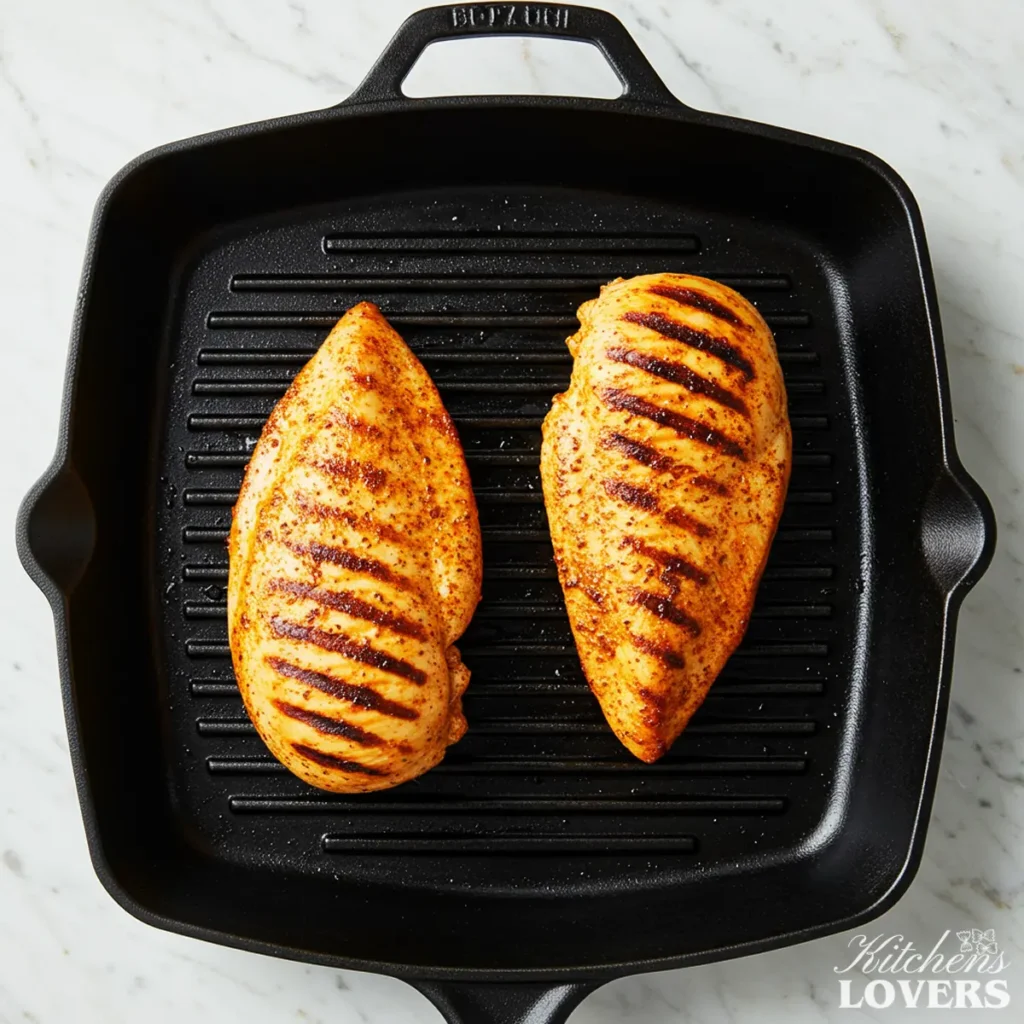
While the pasta is cooking, pat your chicken breasts dry with a paper towel (this helps them get a better sear!). Season them generously on both sides with your Cajun seasoning. Heat the butter and olive oil in your large skillet over medium-high heat. You’ll know it’s ready when the butter is melted and sizzling. Carefully place the chicken in the hot pan, making sure not to overcrowd it. Sear for 5-7 minutes per side, only flipping once, until a deep golden-brown crust forms and the chicken is cooked through. Don’t poke and prod it! Just let it sizzle and develop that incredible flavor. Transfer the cooked chicken to a cutting board and let it rest. For perfect, juicy results and complete peace of mind, the most reliable method is to use an instant-read thermometer to ensure the chicken has reached the USDA’s recommended Safe minimum internal temperature of 165°F (74°C).
Start the Sauce:
Reduce the heat to medium. In the same skillet (don’t wipe it out!), melt the remaining 2 tablespoons of butter. Sizzle the minced garlic for about 30-60 seconds until that nutty, irresistible aroma starts to perfume your entire kitchen. Be careful not to let it burn!
Build the Foolproof Roux:
Now for the most important step. Sprinkle the flour over the garlic butter and start whisking immediately. Continue to whisk for about 60 seconds. It will form a thick, golden paste. This simple roux is the foundation that guarantees your sauce will be velvety smooth and never watery.
Deglaze and Create the Cream Sauce:
While still whisking, slowly pour in the chicken broth. It will sizzle and steam—use your whisk to scrape up all those delicious browned bits from the bottom of the pan. Once the broth is incorporated and the mixture is smooth, slowly pour in the heavy cream, whisking continuously.
Thicken and Season:
Bring the sauce to a gentle simmer (don’t let it boil rapidly). Stir in the Parmesan cheese until it melts completely. Let the sauce continue to bubble gently, stirring occasionally, for 3-5 minutes. Here’s the key visual cue: the sauce is ready when it has thickened enough to coat the back of a spoon. When you can draw a clean, clear line through the sauce with your fingertip, it is absolutely perfect. Season with salt and pepper to taste. If the sauce gets a little too thick, whisk in a splash of that reserved pasta water to thin it out perfectly.
Combine and Serve:
While the sauce is finishing, slice your rested chicken into strips against the grain. Add the drained pasta and the sliced chicken to the skillet with the sauce. Toss everything together until the chicken is heated through and every single piece of pasta is coated in that glorious sauce. Garnish with a sprinkle of diced tomatoes and fresh parsley, and serve immediately.
Once you’ve mastered the classic version—and you will!—you can start playing with it to make it your own. This recipe is an incredible base for a little creativity. These aren’t just guesses; they’re a couple of my favorite tested-and-approved twists that take this dish in a delicious new direction.
The Science of a Perfect, Foolproof Cream Sauce
Have you ever wondered why some cream sauces turn out perfectly silky while others become a disappointing, watery mess? It’s not magic, and it’s not luck. It’s simple food science. Understanding it is the key to never having a sauce fail on you again.
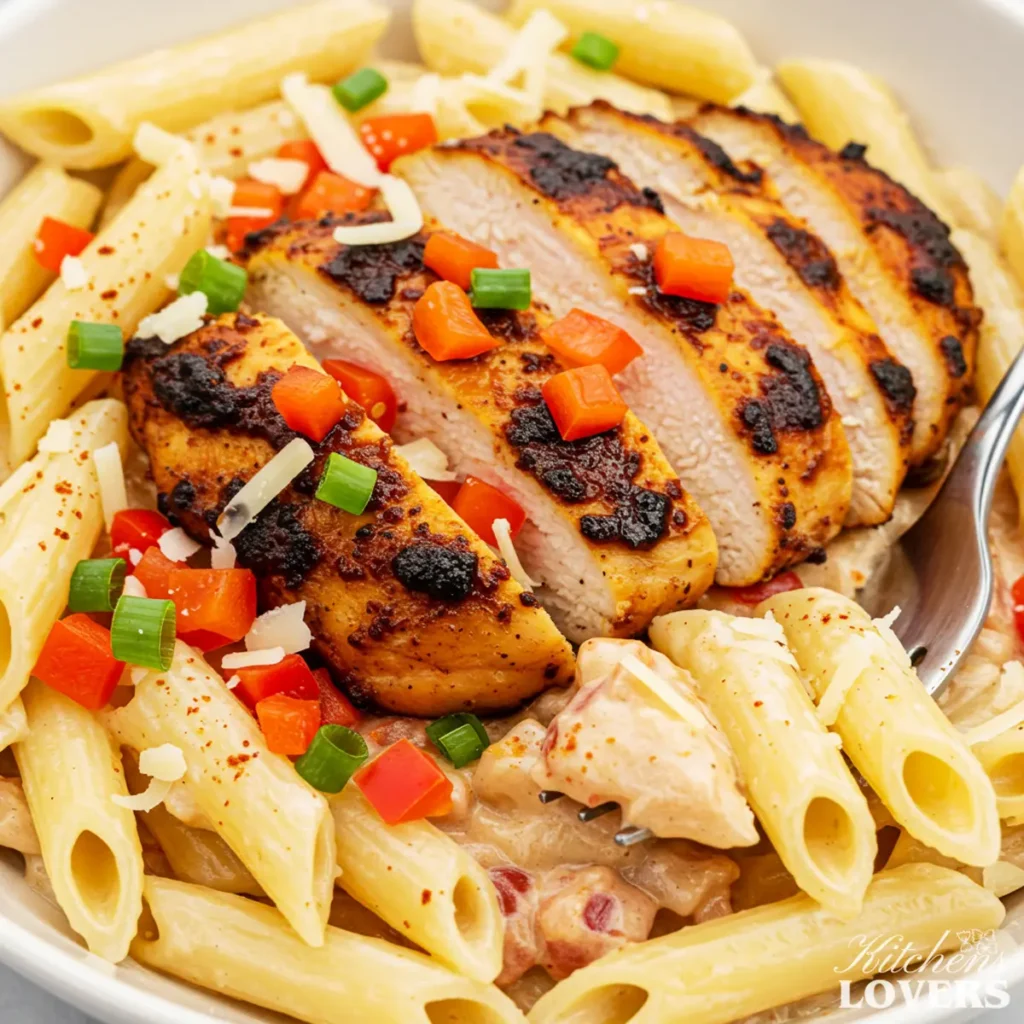
Why Some Sauces Break
The most common reason a cream sauce fails is that it “breaks” or “separates.” A cream sauce is an emulsion—a delicate suspension of milk fats and water. When you see a sauce that looks oily or grainy or has a watery layer, it’s because that emulsion has broken. The fat has separated from the water. This is a huge problem in recipes that simply call for heating cream and melting in cheese without a stabilizer. High heat, or the sudden addition of a cold ingredient, can easily shock the emulsion, causing it to collapse.
Our Secret Weapon: A Starch-Based Stabilizer
This is where our method proves superior. By creating a simple roux (cooking flour in butter) at the start, we are introducing a powerful stabilizer: starch.
When the starch granules from the flour are whisked into the hot liquid, they swell up and create a microscopic web throughout the sauce. This web does two critical things:
- It Thickens: This is the obvious job. The swollen starch granules physically thicken the liquid, giving it body and richness.
- It Stabilizes: This is the most important part. That starch web surrounds and suspends the tiny fat globules from the butter, cream, and cheese, preventing them from clumping together and separating out. It essentially builds a strong, flexible scaffolding within the sauce that holds the emulsion together, making it incredibly resilient and stable.
A simple roux—or a cornstarch slurry, which works in a similar way—is your insurance policy. It guarantees that your sauce will be velvety, smooth, and will cling perfectly to your pasta, not because of hope, but because of science. It’s the definitive reason why our copycat Chili’s Cajun chicken pasta will turn out perfectly creamy every single time.
Pro Variations to Customize
1. Add sautéed peppers and onions.
This is a fantastic way to add another layer of classic Cajun flavor and sneak in some extra veggies. The sweetness of the onions and peppers is a perfect contrast to the spicy, creamy sauce.
- What You’ll Need: 1 red bell pepper and 1 yellow onion, both thinly sliced.
- How to Do It: After you’ve cooked your chicken and set it aside to rest, add the sliced peppers and onions to the hot skillet. Sauté them for 5-7 minutes, stirring occasionally, until they’re soft and have a little bit of color. Then, remove them from the pan and set them aside with the chicken. Proceed with making the sauce as directed in the now-empty skillet. Stir the veggies back in at the very end when you add the chicken and pasta.
2. Make it a Blackened Shrimp Pasta
Craving seafood? This dish is absolutely phenomenal when made with succulent, spicy shrimp instead of chicken. It feels even more decadent.
- What You’ll Need: 1 lb of large shrimp, peeled and deveined.
- How to Do It:Pat the shrimp very dry and toss them in the Cajun seasoning until they’re well-coated. In Step 2 of the main recipe, sear the shrimp instead of the chicken. Be careful—shrimp cook incredibly fast! They’ll only need 1-2 minutes per side in the hot skillet. You’ll know they’re done when they’re pink and opaque. Don’t overcook them! Remove them from the pan and proceed with the recipe exactly as written, adding the cooked shrimp back in at the end with the pasta.
3. Kick Up the Heat
For the true spice lovers, you can easily dial up the intensity. Add 1/4 to 1/2 teaspoon of cayenne pepper to the skillet along with the garlic in Step 3. This will bloom the spice in the hot fat, infusing a deep, fiery heat throughout the entire sauce. Start with a smaller amount—you can always add more.
Storing, Freezing & Reheating
There’s nothing better than knowing you have a round of this incredible pasta waiting for you for lunch or a quick dinner the next day. But cream sauces can be tricky. You can’t just throw them in the microwave and hope for the best.
Storing in the Refrigerator
This is the ideal method. Once the pasta has cooled to room temperature, transfer it to an airtight container. It will keep beautifully in the refrigerator for up to 3 to 4 days. The flavors will actually continue to meld and deepen overnight, making it even more delicious.
A Note on Freezing
I get asked about freezing cream-based pastas a lot, and I’m going to give you the honest, professional truth: I don’t recommend it. Dairy, especially heavy cream, has a tendency to separate and become grainy when frozen and thawed. While the dish would still be edible, that perfect, silky texture we worked so hard to create would be lost. This dish is at its absolute best when fresh or refrigerated.
The Best Way to Reheat Cajun Chicken Pasta
When you pull your container out of the fridge, you’ll notice the sauce has thickened up considerably and looks a bit clumpy. Don’t worry! This is completely normal; the pasta has absorbed some of the liquid. The microwave is your enemy here—it will zap the sauce unevenly and can make it oily.
The stovetop is, without question, the best way to bring it back to its original glory.
- Place the leftover pasta in a small skillet or saucepan over medium-low heat.
- Add a splash of liquid. This is the non-negotiable secret to success. Add a tablespoon or two of milk, half-and-half, or even chicken broth to the pan.
- Heat gently, stirring frequently. As the pasta heats up, stir it gently. The added liquid will replenish the moisture, and the sauce will loosen up and become just as silky and creamy as it was on day one.
- Serve when it’s hot. This will only take a few minutes. You’ll know it’s ready when the sauce is bubbling gently and everything is heated through.
What to Serve With This Dish
This copycat Chili’s Cajun chicken pasta is a robust, satisfying meal all on its own. The pasta is rich, decadent, and unapologetically bold. So, when it comes to side dishes, the goal is to complement, not compete. We want simple, clean flavors that round out the meal perfectly.
Here are my top three pairings:
- Classic Garlic Bread: This is non-negotiable in my house. You’re going to have some of that incredible, creamy sauce left in your bowl, and you’ll need a delicious tool for mopping up every last drop. A warm, crusty slice of garlic bread is the perfect answer.
- A Crisp, Simple Green Salad: The richness of the Alfredo sauce and the spicy kick of the Cajun seasoning need a bright, acidic counterpoint. A simple salad of mixed greens, maybe some cucumber and cherry tomatoes, tossed in a zesty lemon vinaigrette is the perfect palate cleanser. That cool, crisp crunch is a welcome contrast to the creamy pasta.
- Roasted or Steamed Green Veggies: Sometimes, the simplest solution is the best. A side of quickly steamed broccoli or roasted asparagus adds a welcome touch of green and a bit of fresh, earthy flavor that beautifully balances the meal without overwhelming it.
These pairings keep the focus right where it belongs: on that amazing bowl of pasta. That incredible crust we build on the chicken is the heart of this dish’s flavor. If you’re a fan of that bold, spicy sear, and if you fell in love with building that perfect Cajun crust, you’re ready to master its cousin. The next recipe you have to try is my Blackened Chicken Alfredo, where we use this exact searing technique to create an even deeper, smokier flavor. to a whole new level of creamy, spicy perfection.
Frequently Asked Questions (FAQs)
Sauce & Spice Adjustments
Don’t panic! This is an easy fix. If your sauce is thinner than you’d like, it usually means it just needed a few more minutes of simmering to reduce and thicken up. But if you’re short on time, you can use a simple cornstarch slurry. Here’s how:In a small bowl, whisk together 1 tablespoon of cornstarch with 2 tablespoons of cold water until it’s completely smooth. While the sauce is gently bubbling, slowly stream in the slurry while whisking constantly. Let it simmer for another minute or two, and it will thicken up to that perfect, creamy consistency.
Absolutely! The beauty of cooking at home is that you are in complete control of the heat level. The spice comes entirely from the Cajun seasoning. The easiest way to dial it down is to look for a “mild” version of your favorite store-bought brand. Alternatively, you can make your own seasoning blend at home, which allows you to control the amount of cayenne pepper—or leave it out entirely for a flavorful but not spicy dish.
Pasta & Cheese Choices
Yes, you can, but for the best results, you want to choose a pasta shape that can stand up to this thick, creamy sauce. I recommend penne because its tubes and ridges are perfect for catching all that deliciousness. However, fettuccine, rigatoni, and even bow-tie pasta are also fantastic options. I would advise against using very thin, delicate pastas like angel hair, as they would get overwhelmed and lost in such a robust sauce.
I am going to strongly advise against this. I know it’s tempting to use for convenience, but the results just aren’t the same. Those pre-shredded cheeses in a bag are coated with additives like potato starch and cellulose to prevent the shreds from clumping. Those same additives will prevent your cheese from melting smoothly and can give your sauce a slightly gritty or grainy texture. For the creamiest, most luxurious sauce, grating a block of Parmesan cheese yourself is a small step that makes a world of difference.
I truly believe this is the best, most reliable copycat Chili’s Cajun chicken pasta recipe out there, and I can’t wait for you to try it in your own kitchen. There is nothing more rewarding than seeing you succeed and fall in love with a recipe.
If you make this dish, please leave a comment and a star rating below! I’d love to know how it turned out. And tell me—did this foolproof method finally solve the watery sauce problem for you? Sharing your experience helps other home cooks find the perfect recipe.
More Delicious Pasta Dinners to Try
If you love the bold, creamy, and spicy flavors in this recipe, you’re in the right place! For another incredibly simple one-pan wonder, you absolutely have to try my flavor-packed Chicken Lazone. And for even more ideas to spice up your weeknight routine, be sure to explore my complete collection of Spicy Chicken Pasta Recipes.
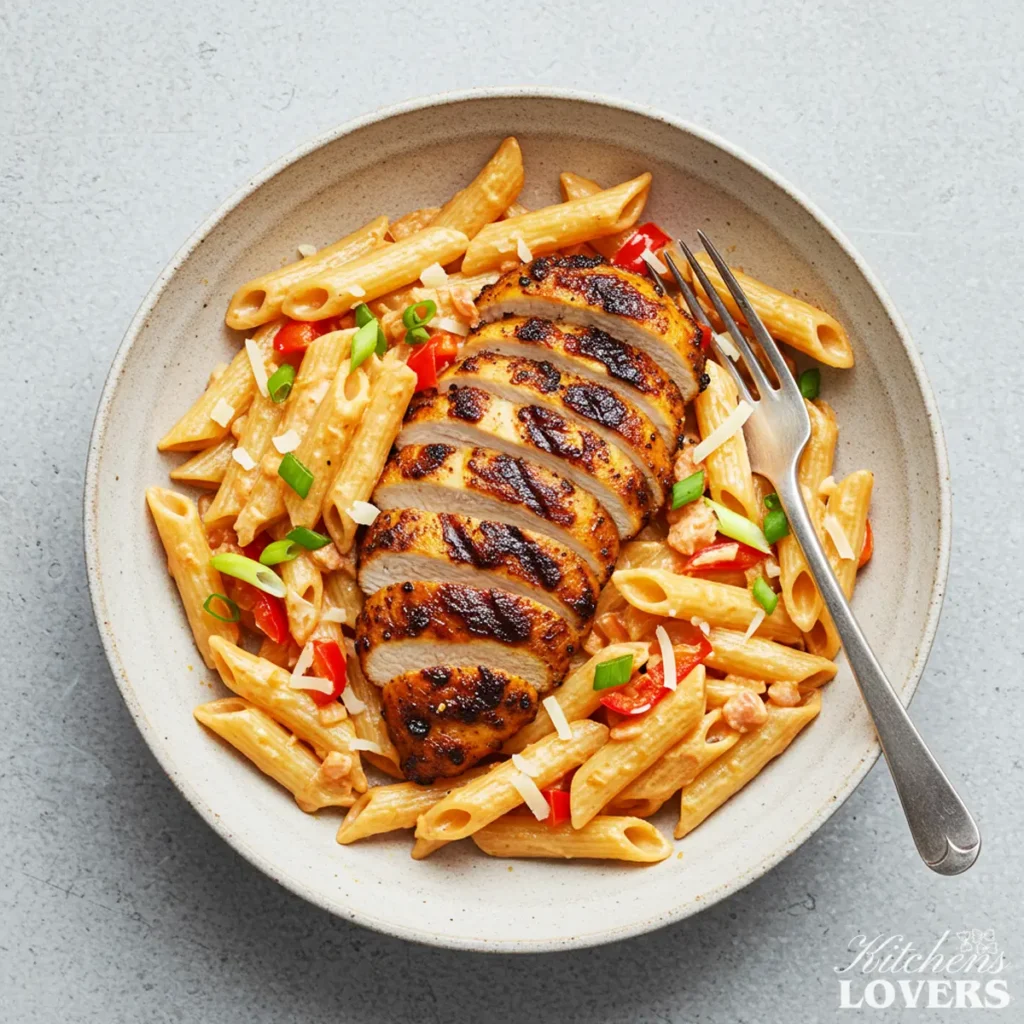
Get a new, easy, family-approved recipe in your inbox every single week! Sign up for my newsletter and never wonder, “What’s for dinner?” again.
Kate Thompson created KitchensLovers.com to simplify dinner for real-life families. She develops easy, flavor-packed chicken pasta recipes tested dozens of times to guarantee results. Her motto: ‘Easy Pasta, Every Time.’
This recipe was last tested and updated in September 2025 to ensure perfect results.
Copycat Chili’s Cajun Chicken Pasta (That’s Actually Creamy!)
Equipment
- A Large, Heavy-Bottomed Skillet (12-inch)
- A Sturdy Whisk
- Tongs
- A Large Pot for Boiling Pasta
Ingredients
For the Cajun Chicken
- 2 large boneless skinless chicken breasts (about 1.5 lbs total)
- 2 tbsp Cajun Seasoning use your favorite store-bought brand
- 1 tbsp Butter
- 1 tbsp Olive Oil
For the No-Fail Creamy Sauce & Pasta
- 8 oz Penne Pasta
- 2 tbsp Butter
- 2 tbsp All-Purpose Flour The key to a thick, stable sauce.
- 3 cloves Garlic freshly minced
- 1/2 cup Chicken Broth
- 2 cups Heavy Cream
- 1 cup Parmesan Cheese freshly grated
- Salt and Black Pepper to taste
For Garnish
- 1/4 cup Roma Tomatoes diced
- 2 tbsp Fresh Parsley chopped
Instructions
- Cook the Pasta: Get your large pot of salted water to a rolling boil. Add the penne and cook according to package directions until it’s al dente—tender but still with a slight bite. Just before you drain, scoop out about a cup of the starchy pasta water and set it aside. Drain the pasta and set it aside.
- Season and Sear the Chicken: While the pasta is cooking, pat your chicken breasts dry with a paper towel. Season them generously on both sides with your Cajun seasoning. Heat the butter and olive oil in your large skillet over medium-high heat. Carefully place the chicken in the hot pan. Sear for 5-7 minutes per side, only flipping once, until a deep golden-brown crust forms and the chicken is cooked through to 165°F (74°C). Transfer the cooked chicken to a cutting board and let it rest.
- Start the Sauce: Reduce the heat to medium. In the same skillet, melt the remaining 2 tablespoons of butter. Sizzle the minced garlic for about 30-60 seconds until aromatic, but not browned.
- Build the Foolproof Roux: Sprinkle the flour over the garlic butter and start whisking immediately. Continue to whisk for about 60 seconds. It will form a thick, golden paste. This is the foundation for a perfectly creamy sauce.
- Deglaze and Create the Cream Sauce: While still whisking, slowly pour in the chicken broth. Use your whisk to scrape up any flavorful browned bits from the bottom of the pan. Once the broth is incorporated and smooth, slowly pour in the heavy cream, whisking continuously.
- Thicken and Season: Bring the sauce to a gentle simmer. Stir in the Parmesan cheese until it melts completely. Let the sauce bubble gently, stirring occasionally, for 3-5 minutes, or until it has thickened enough to coat the back of a spoon. Season with salt and pepper to taste. If it’s too thick, add a splash of reserved pasta water.
- Combine and Serve: Slice your rested chicken into strips. Add the drained pasta and the sliced chicken to the skillet with the sauce. Toss everything together until the chicken is heated through and every piece of pasta is coated. Garnish with diced tomatoes and fresh parsley, and serve immediately.
Notes
- How to Guarantee Your Sauce Is Never Watery: The roux (flour and butter) is the most important step. Also, avoid adding cold cream to a very hot pan to prevent it from breaking.
- The Secret to Juicy Chicken: Use a hot pan and don’t overcrowd it to get a great sear. Always let the chicken rest for 5-10 minutes before slicing to allow the juices to redistribute.
- Use Freshly Grated Parmesan: Avoid pre-shredded cheese, which contains additives that can make your sauce gritty. Grating it yourself ensures the smoothest, creamiest sauce.
